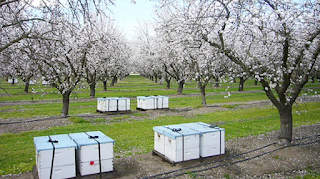Saving Honeybees: A Community Effort to Preserve Our Pollinators
Honeybees (Apis mellifera) are facing numerous threats that have led to a decline in their populations over the past few decades. From parasitic mites to viral diseases and environmental stressors, the challenges are significant. Yet, the importance of honeybees to our agriculture, ecosystem, and community cannot be overstated.
1. The Threats Facing Honeybees
One of the primary threats to honeybees is the varroa mite (Varroa destructor), an ectoparasite that transfers viruses to bees by piercing their body tissue. These viruses, including Acute Bee Paralysis Virus (ABPV) and Deformed Wing Virus (DWV), severely impact honeybee health. Other viral threats include Black Queen Cell Virus (BQCV) and Chronic Bee Paralysis Virus (CBPV).
Colony Collapse Disorder (CCD) is another significant issue where worker bees abandon the hive, leaving behind the queen and immature bees. The exact cause of CCD is still under investigation, but it is believed to result from multiple factors, including environmental stressors and extreme weather conditions, such as severe droughts and temperature fluctuations.
2. The Importance of Honeybees
Honeybees are critical pollinators for many crops, making them indispensable to our food supply. A single beehive can contain around 40,000 bees, which visit millions of flowers to produce honey and wax. For instance, producing one pound of honey requires approximately one million flower visits.
In California alone, almond growers rely on 2.2 million beehives annually to pollinate their crops, illustrating the vital role of managed honeybee colonies in agriculture. Without these pollinators, many crops, including melons, squashes, blueberries, and apples, would fail.
Honeybees also contribute to the production of honey and other hive products that have antibacterial, antifungal, and antimicrobial properties. These products are used in medicine, wound care, and home remedies, highlighting the broad benefits of honeybees beyond pollination.
3. How Gardeners Can Help
Gardeners play a crucial role in supporting honeybee populations. Here are some practical steps to help:
- Plant Wildflowers: Bees will travel up to a three-mile radius from their hive in search of nectar and pollen. Planting wildflowers provides essential forage for bees.
- Avoid Harmful Pesticides: Use weed and feed in areas with wildflowers and avoid systemic insecticides, which can be harmful to bees. If insecticides must be used, choose carefully and apply them at dusk to minimize exposure to bees.
- Support Local Beekeepers: Purchase honey directly from local beekeepers to ensure it is genuinely local and to support those who maintain healthy bee populations.
By taking these steps, gardeners can create a more bee-friendly environment and contribute to the health and sustainability of honeybee colonies.
Frequently Asked Questions (FAQs)
Q: What are the main threats to honeybee populations?
A: Honeybee populations are threatened by varroa mites, viral diseases, environmental stressors, Colony Collapse Disorder (CCD), and extreme weather conditions.
Q: Why are honeybees important?
A: Honeybees are essential pollinators for many crops, contributing significantly to food production and maintaining biodiversity. They also produce honey and other beneficial hive products.
Q: How can gardeners help support honeybee populations?
A: Gardeners can plant wildflowers, avoid harmful pesticides, and support local beekeepers to create a more bee-friendly environment.
Q: What is Colony Collapse Disorder (CCD)?
A: CCD is a phenomenon where worker bees abandon their hive, leaving behind the queen and immature bees. It is believed to result from multiple factors, including environmental stressors and diseases.
Q: How do honeybees contribute to agriculture?
A: Honeybees pollinate a wide range of crops, ensuring successful fruit and vegetable production. They are especially crucial for crops like almonds, melons, squashes, blueberries, and apples.
Hashtags
- #SaveTheBees
- #PollinatorHealth
- #BeeFriendlyGardening
- #SupportLocalBeekeepers
- #HoneybeeConservation

